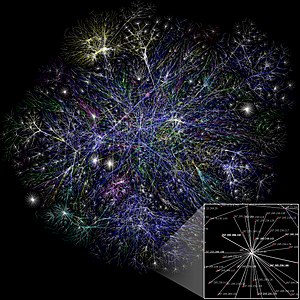The Internet is allowing greater flexibility in working hours and location, especially with the spread of unmetered high-speed connections and web applications.
The Internet can now be accessed almost anywhere by numerous means, especially through mobile Internet devices. Mobile phones, datacards, handheld game consoles and cellular routers allow users to connect to the Internet from anywhere there is a wireless network supporting that device's technology. Within the limitations imposed by small screens and other limited facilities of such pocket-sized devices, services of the Internet, including email and the web, may be available. Service providers may restrict the services offered and wireless data transmission charges may be significantly higher than other access
Many people use the terms Internet and World Wide Web (or just the Web) interchangeably, but, as discussed earlier, the two terms are not synonymous. The World Wide Web is a global set of documents, images and other resources, referenced and interconnected by Uniform Resource Locators (URLs) and hyperlinks. These URLs allow users to address the web servers and other devices that store these resources and access them as required using the Hypertext Transfer Protocol (HTTP). HTTP is only one of the communication protocols used on the Internet. Web services may also use HTTP to allow software systems to communicate in order to share and exchange business logic and data.
methods.



No comments:
Post a Comment